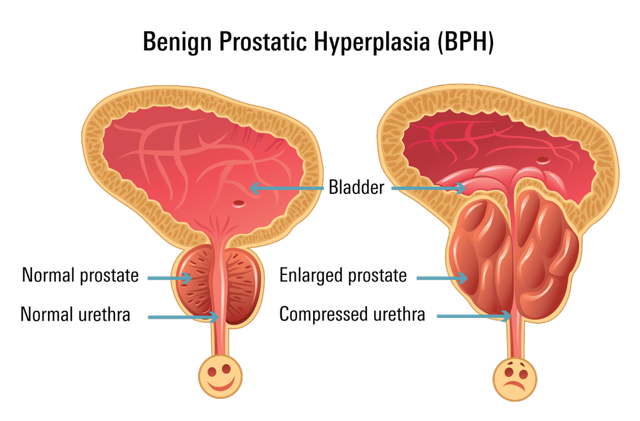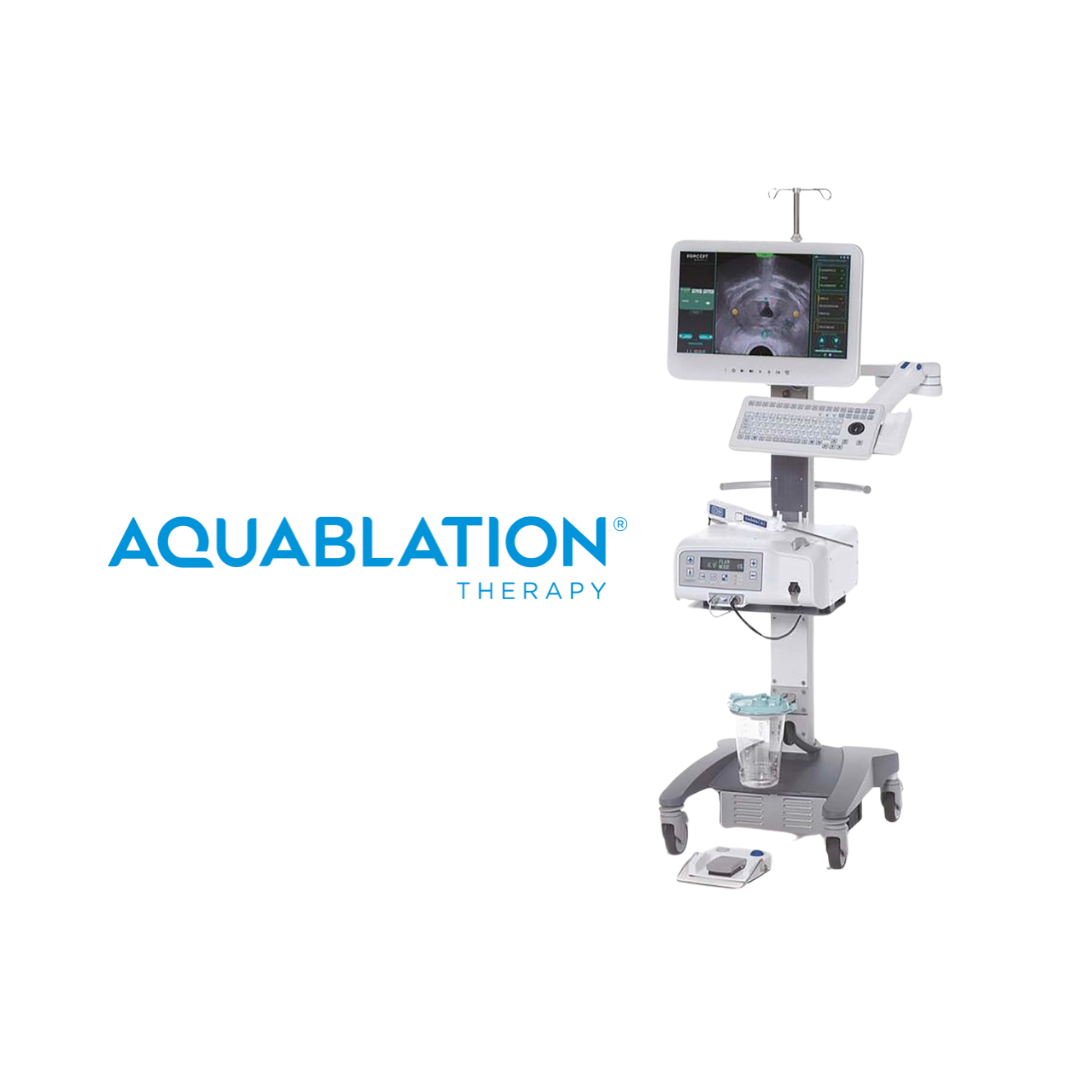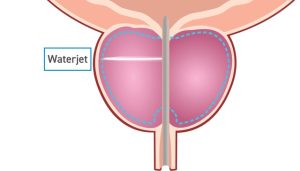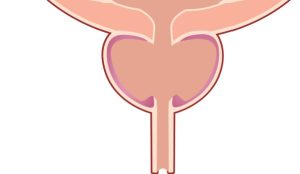Benign Prostatic Hyperplasia (BPH) is one of the most common urological conditions in men. It affects 50% of men over the age of 40, and this percentage rises to 80% in men aged 60 to 80. The prostate, a small gland through which the urethra passes, enlarges over time, making it more difficult for urine to flow. The size of the prostate begins to gradually increase from the age of 25, while symptoms tend to appear later in life. Although prostatic hyperplasia is generally not life-threatening, it can significantly affect a man’s quality of life.
Prostatic hyperplasia can cause symptoms such as frequent urination, nocturia (nighttime urination), urgency, a sensation of incomplete bladder emptying, weak or intermittent urine stream, and in more severe cases, urinary retention, bladder stones, urinary tract infections, and even kidney failure in advanced stages.

TREATMENT
The treatment of BPH is divided into conservative (medication-based) and interventional (surgical) approaches.
Conservative treatment is largely symptomatic, aiming to alleviate some of the symptoms of hyperplasia without addressing the underlying cause or halting the further growth of the prostate and progression of the condition. In addition, medical treatment is associated with well-documented and frequent side effects, which can make adherence to the therapy difficult for some men.
Surgical treatment is the only curative approach for prostatic hyperplasia. Every surgical method aims to reduce the size of the prostate in order to relieve urinary obstruction. Today, transurethral techniques have become predominant, offering maximum safety and effectiveness compared to more invasive and traditional open surgical methods.
ROBOTIC AQUABLATION THERAPY FOR BPH TREATMENT
Aquablation therapy is a safe, advanced, and minimally invasive treatment for patients suffering from lower urinary tract symptoms (LUTS) due to Benign Prostatic Hyperplasia (BPH). It can be applied to prostates of any size and shape. The procedure uses the power of water, controlled with robotic precision, to remove excess prostate tissue, offering long-lasting relief without compromise.

WHAT IS AQUABLATION THERAPY?
Aquablation therapy is the only real-time, image-guided waterjet treatment for BPH, performed with robotic assistance and ultrasound imaging. It uses a heat-free water jet to remove prostate tissue.
WHO IS AQUABLATION THERAPY FOR?
It is intended for men with BPH who are seeking a normal, uncompromised quality of life. Aquablation therapy offers a minimally invasive and effective solution for lower urinary tract symptoms (LUTS) caused by BPH. Using robotic precision, Aquablation provides lasting results with a low risk of complications, significantly improving the patient’s quality of life.
HOW AQUABLATION THERAPY WORKS?
Step 1 Surgical Planning
 With the help of ultrasound imaging, doctors create a detailed plan for the procedure. This plan outlines the specific areas of the prostate that need to be removed. Tissue within the marked area can be removed, while tissue outside that area remains untouched.
With the help of ultrasound imaging, doctors create a detailed plan for the procedure. This plan outlines the specific areas of the prostate that need to be removed. Tissue within the marked area can be removed, while tissue outside that area remains untouched.
Step 2 Prostate tissue removal
 Next, a robotically assisted system follows the surgical plan and removes the targeted prostate tissue using a heat-free water jet. This advanced technology ensures precise, consistent, and predictable tissue removal.
Next, a robotically assisted system follows the surgical plan and removes the targeted prostate tissue using a heat-free water jet. This advanced technology ensures precise, consistent, and predictable tissue removal.
Step 3 After the treatment

After the procedure, urine flows normally from the bladder, through the treated prostate, and out of the body.
WHAT IS THE EFFECTIVENESS OF AQUABLATION THERAPY?
-
Over 99% maintained continence
-
100% preserved erectile function
-
89% preserved ejaculation
-
94% did not require retreatment after 5 years
WHY CHOOSE AQUABLATION THERAPY?
Other treatment options may require men to make compromises, often resulting in limited relief, long recovery times, or unwanted side effects such as ejaculatory disorders, erectile dysfunction, or incontinence.
Aquablation therapy is the only real-time, ultrasound-guided, robotically assisted treatment that uses a heat-free water jet to treat BPH. This unique procedure can be performed on prostates of any shape or size, offering long-lasting relief.
Aquablation allows the surgeon to customize the treatment plan to each patient’s specific anatomy, accurately remove problematic tissue with robotic precision, and preserve the critical tissue responsible for maintaining sexual function and continence.
SUMMARY OF THE ADVANTAGES OF AQUABLATION THERAPY
-
Safety: The only treatment that truly removes the prostate adenoma while preserving all functions — erectile function, ejaculation, and continence
-
Effectiveness: All clinical indicators of lower urinary tract symptom improvement show significant enhancement (quality of life, IPSS, Qmax)
-
Long-lasting results: Clinical studies show that only 6% of patients require retreatment within five years
-
Quick procedure with a personalized treatment plan tailored to each individual’s anatomy
-
Minimal complications
-
Same-day discharge
-
Fast recovery and quick return to normal daily activities

